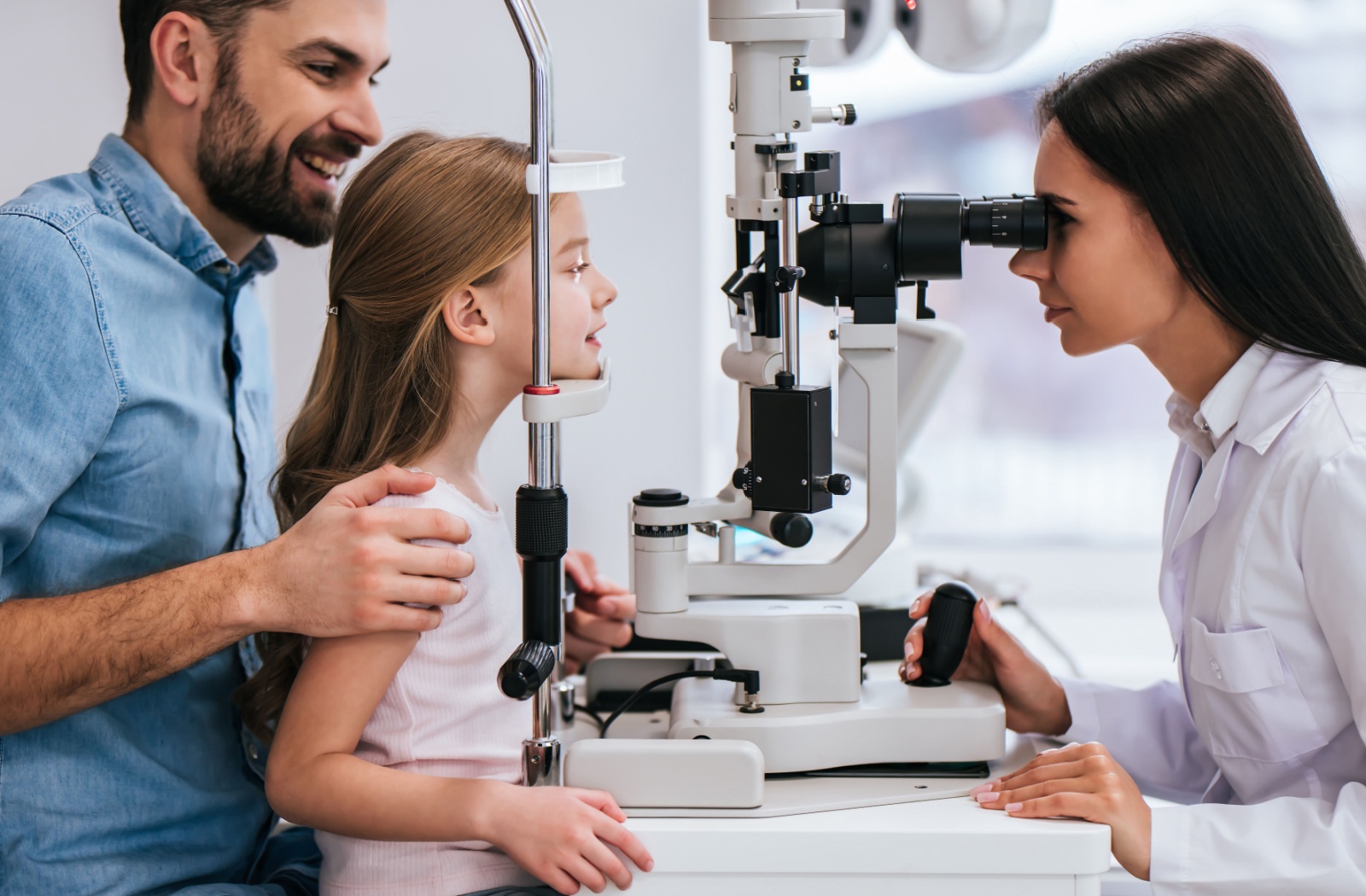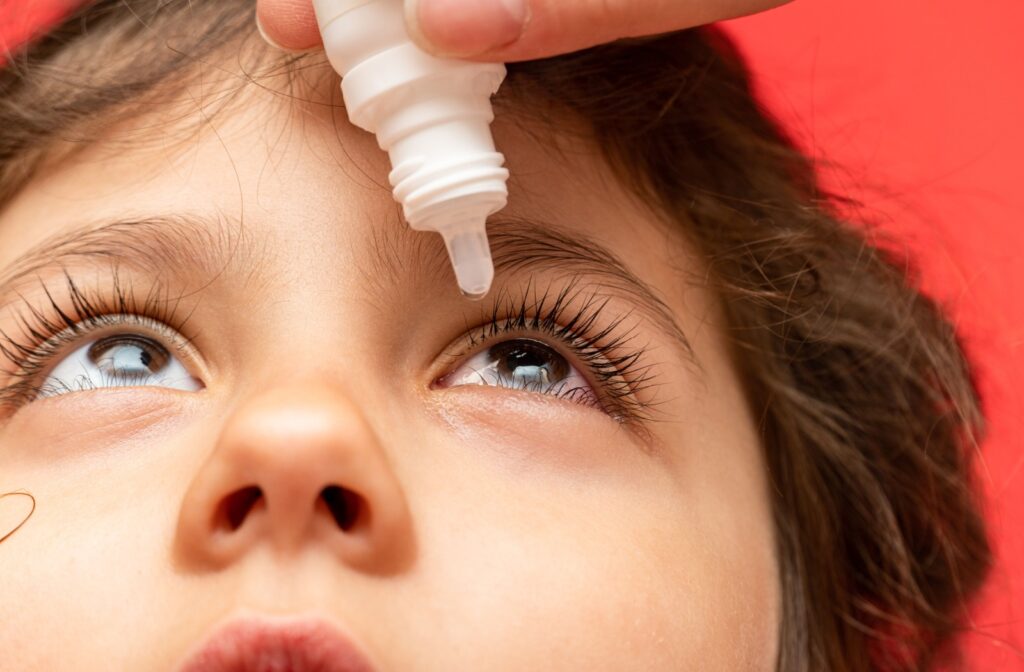Young eyes are still developing, making them more vulnerable to various conditions that affect vision and comfort. As a parent, understanding how to address these issues effectively is crucial. One of the most used treatments for eye problems in children is eye drops, so they deserve reasonable consideration.
Some of the best eye drops for common conditions affecting children are:
- Artificial tears
- Antihistamine eye drops
- Antibacterial eye drops
- Atropine eye drops
Common Eye Conditions in Children
Children can experience several eye issues that may require the use of eye drops, including:
- Dry Eye: Dry eye occurs when the eyes don’t produce enough tears or when the tears evaporate too quickly. Though rarer, children can certainly experience this discomfort too. Symptoms include redness, irritation, and a burning sensation. It can be caused by environmental factors, screen time, or underlying health issues.
- Pink Eye (Conjunctivitis): Pink eye, or conjunctivitis, is an inflammation of the conjunctiva, the thin layer covering the white part of the eye. It can be viral, bacterial, or allergic. Symptoms include redness, discharge, and irritation.
- Allergies: Allergic conjunctivitis is a common eye condition in children, especially during allergy season. It causes itching, redness, and watery eyes. Allergens such as pollen, dust, and pet dander are typical culprits.
Eye Drops Safe for Kids
When choosing eye drops, try to find a preservative-free brand, especially if your child needs them frequently or long-term. They reduce the risk of irritation and are available in single-use vials.
Artificial Tears for Dry Eye
Artificial tears, also known as lubricating eye drops can help alleviate dryness and irritation. They restore moisture to the eye directly and typically have the same proteins your natural tears have. You can usually find over-the-counter brands and they’re also useful for allergies or digital eye strain. They’re generally safe for frequent use and can provide immediate relief.
Antihistamine Eye Drops for Allergies
During an allergic reaction, your body releases histamines to combat the generally harmless allergens. This overreaction from the immune system is what causes allergy’s signature itching and burning. Antihistamine eye drops reduce allergic reactions by blocking histamines in the eyes.
Always talk to your eye doctor before using any brand of allergy eye drops and read the instructions carefully.
Antibacterial Eye Drops for Bacterial Conjunctivitis
Quick action is vital when pink eye runs rampant. Different types require different treatments, as we’ve mentioned with allergic conjunctivitis, so when it has a bacterial origin, antibacterial eye drops are best.
An eye doctor will typically prescribe antibacterial eye drops when they’re needed. Ensure you follow the directions to avoid potential complications.
Atropine Eye Drops for Myopia Management
Atropine eye drops have a somewhat unique use. You can’t typically pick them up from the shelf. Instead, they’re a part of dilated eye exams, allowing your optometrist to examine the back of the eye.
For children, they’re also used to potentially slow the progression of myopia (nearsightedness). These should only be used under the guidance of an eye care professional.

How to Administer Eye Drops to Kids
Administering eye drops to children can be challenging, but following these steps can make the process smoother:
- Wash your hands: Always start by washing your hands thoroughly to prevent introducing any bacteria or dirt into your child’s eyes.
- Explain the process: Calmly explain to your child what you are going to do. This helps reduce anxiety and makes them more cooperative.
- Position your child: Have your child lie down or tilt their head back while sitting. This ensures the drops stay in the eye longer.
- Hold the eyelids: Gently pull down the lower eyelid to create a small pocket.
- Apply the drops: Hold the dropper close to the eye but avoid touching it to the eye or eyelashes. Squeeze one drop into the pocket.
- Close the eye: Ask your child to close their eye gently and keep it closed for a minute to allow the medication to spread evenly.
- Repeat if necessary: If more than one drop is required, wait at least 5 minutes before applying the next drop.
Tips for Making the Process Easier
Practice makes perfect when it comes to administering eye drops to kids. In time, they may be able to do it themselves, but until then, keep these things in mind:
- Stay Calm: Your calm demeanour can help soothe your child.
- Use Distractions: Distract younger children with a favourite toy or video during the process.
- Reward Cooperation: Offer small rewards or praise to encourage cooperation.
Preventing Future Eye Issues
Prevention is better than a cure, and there are few places where that’s more accurate than with children’s eye care.
Schedule regular eye exams to detect and address any issues early. Early detection can prevent minor problems from becoming serious. We recommend your child come in annually so we can monitor their eye development.
Additionally:
- Ensure proper lighting during activities like reading and screen time.
- Limit screen time to reduce eye strain and dryness.
- Encourage a balanced diet rich in vitamins A, C, and E, along with Omega-3 fatty acids.
- Teach children to wash their hands frequently and avoid rubbing their eyes.
- Ensure they use clean tissues or towels to wipe their face and eyes.
Key Takeaways
Children’s eyes are still developing, which makes them more susceptible to common issues like dry eye, conjunctivitis, and allergies. Understanding these conditions—and how to treat them safely—is essential for protecting their long-term vision and comfort.
When used appropriately, eye drops can be an effective part of managing childhood eye concerns. Artificial tears help soothe dryness and irritation, while antihistamine eye drops can reduce itching and redness caused by allergies. For bacterial conjunctivitis, antibacterial eye drops prescribed by an eye doctor are typically the best course of action. Atropine eye drops also play a valuable role in slowing myopia progression, but they should always be used under professional supervision.
Administering eye drops to children can be challenging, but proper technique goes a long way. Washing your hands, explaining the process, and positioning your child comfortably can make the experience smoother and safer. Remaining calm, using distractions, and offering praise can further help children tolerate the process.
Preventing eye issues is just as important as treating them. Regular eye exams—ideally once a year—help detect concerns early. Good habits such as limiting screen time, maintaining proper lighting, promoting handwashing, and encouraging a nutrient-rich diet all support healthier eyes.
By staying proactive and seeking professional guidance when needed, parents can help ensure their child enjoys clear, comfortable vision as they grow.
Book Your Next Eye Exam Today!
Early detection and treatment of eye conditions in children are vital for maintaining good vision and overall eye health. As parents, being proactive in your child’s eye care routine helps support a clear and comfortable view of the world around them.
If you have concerns about your child’s eye health or need personalized advice, don’t hesitate to book an appointment with EyeCare Niagara. We’re here to support you and your family with exceptional eye care services and peace of mind.




